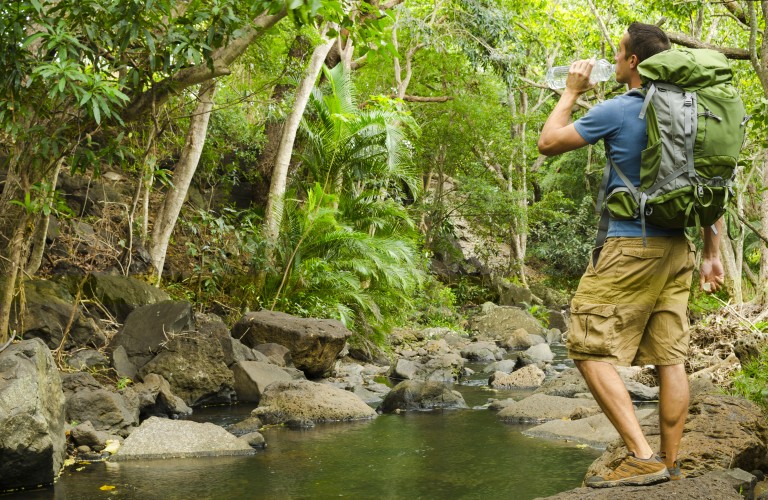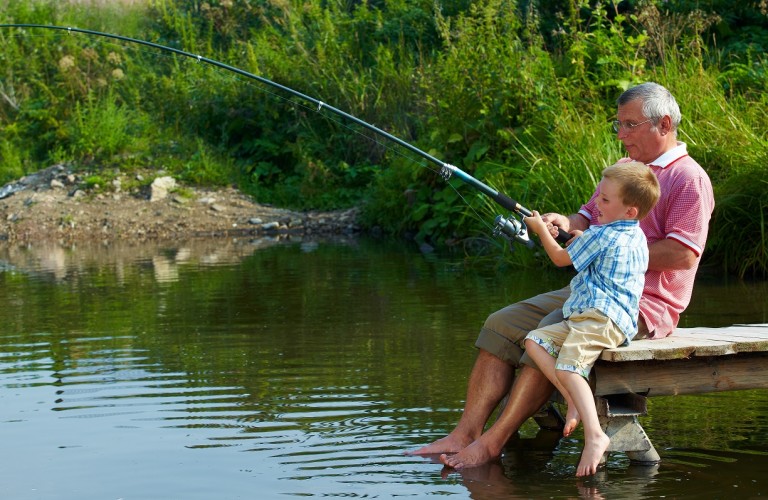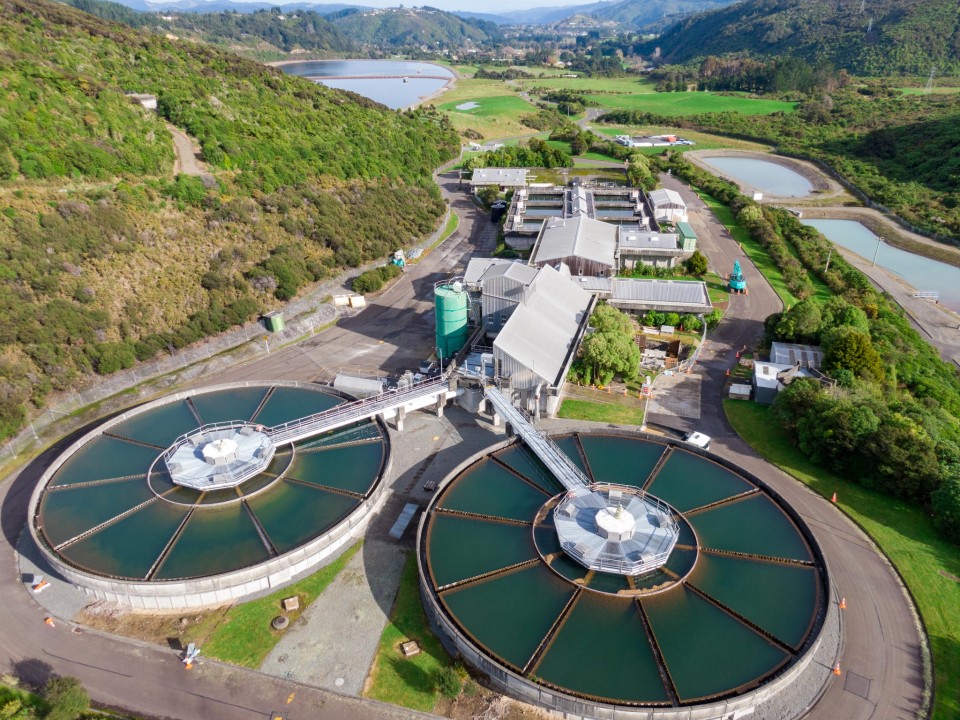Water supply (EXAMPLE)
Every drop of water that reaches your home has travelled through forests, rivers, underground aquifers, and sophisticated infrastructure.
Catchments
Much of the water supplied to the Wellington metropolitan area starts its journey in nature, from rivers, forests, and underground aquifers that are carefully protected and managed.
We only take what we need from these rivers, and always leave enough flowing downstream to protect river ecosystems and allow for recreation like swimming, kayaking, and fishing.
We draw drinking water from three key sources:
- Hutt River / Te Awakairangi
- The combined flow of the Wainuiomata and Orongorongo rivers
- The Waiwhetu Aquifer – a natural underground reservoir beneath the Hutt Valley, recharged by river water that slowly filters through the ground.

Hutt Water Collection Area
The Hutt Water Collection Area covers almost 9,000 hectares of bush-clad mountains and valleys at the southern edge of the Remutaka Ranges. The collection area is about equal in size to a square with the length of each side the same as the distance between Wellington's railway station and Petone.
Rainwater collects in tributary streams that flow into Hutt River. We have a weir (low dam) at Kaitoke, north of Upper Hutt, where water is taken from the river, strained to remove sticks, stones, leaves and silt, and is then piped through tunnels to the Te Marua Water Treatment Plant.
We are allowed to take up to 150 million litres of water per day from the Hutt River, provided an adequate flow is maintained downstream of the weir. The Hutt Water Collection Area provides about 40 percent of the water we supply each year, on average.
Wainuiomata/Orongorongo Water Collection Area
The Wainuiomata/Orongorongo Water Collection Area is part of the Remutaka Ranges to the east of Wainuiomata. The collection area covers 7,600 hectares. Five low dams (weirs) with intakes and pipes provide water to the Wainuiomata Water Treatment Plant.
Intakes on the Wainuiomata River and George Creek provide around 15 percent of our annual water supply, on average. In the Orongorongo Valley, weirs on the Orongorongo River, Big Huia Creek and Little Huia Creek provide around five percent of annual water supply, on average. A 3.2 kilometre long access and pipeline tunnel links the Orongorongo Valley intakes to the Wainuiomata Valley and the treatment plant.
We must leave a minimum water flow equivalent to 8.6 million litres per day in the Wainuiomata and Orongorongo Rivers, downstream of our weirs. Unlike Te Marua, there is no untreated water storage at Wainuiomata. If river levels are very low or the rivers are in flood the treatment plant is turned off temporarily.
Waiwhetū artesian aquifer
The Waiwhetū artesian aquifer is a zone of water-holding sand, gravel and boulders beneath the Hutt Valley. Water from the Hutt River starts to flow underground around Taita Gorge. From Melling southwards, the water becomes naturally pressurised beneath a layer of hard clay.
This pressurised zone, the Waiwhetū artesian aquifer, stretches as far south as the harbour. It is estimated to be up to 70 metres thick at its western edge against the Wellington fault line, and 20 metres thick at the eastern edge of the harbour. The pressure in the aquifer has resulted in several fresh water springs in the harbour floor.
Water takes more than 12 months to pass through the aquifer to our wells and is naturally filtered while underground. We monitor the aquifer closely to ensure we leave enough water in it to maintain pressure, so that sea water cannot enter via the harbour springs. The Waiwhetū aquifer provides around 40% of the annual water supply on average, but this can increase to nearly 70% on a daily basis in summer when river supplies dry up. This makes the aquifer critical for our drought resilience.
Storage
During dry periods, particularly in summer, river levels can drop and that’s when we turn to our backup.
To help meet demand when rivers run low, we store water in two large lakes at Te Marua (the Macaskill Lakes). These lakes act as our safety net, helping us supply water reliably year-round while protecting the natural environment.

Macaskill Lakes at Te Marua
We have two large storage lakes at Te Marua - the Macaskill Lakes - as back-up to the Hutt River supply. The lakes are filled from the river when it is clean and there is plenty of water available. Stored water is pumped back to the treatment plant when there is not enough water in the river to meet public demand, when the river is too dirty - after heavy rainfall - or when it is in flood and the intake is closed to prevent rocks and gravel from entering the intake pipes.
The Macaskill Lakes are around 17 metres deep and have a combined useable capacity of approximately 3,350 million litres. In a severe drought the Macaskill Lakes can supplement supply for 2-3 months or longer if needed, depending on the level of demand and the amount of water available from other sources.
Catchments
We supply 4.1 million litres of water per day (on average) to Greytown, Featherston, Martinborough and Pirinoa.
Drinking water in South Wairarapa comes from four sources:
- Four bores that take water from next to the Waiohine River, supplying both Featherston and Greytown
- A single groundwater bore in Memorial Park, Greytown, supplying Greytown only. The bore is recharged from the Waiohine river
- Three bores that take water from next to the Ruamahanga River, supplying Martinborough
- One groundwater bore supplying Pirinoa

Featherston and Greytown water collection area
The towns of Featherston and Greytown get their water from the Waiohine River. The catchment of the Waiohine River is in the Tararua Ranges and is covered in native bush. The bores are adjacent to the river on Waiohine Valley Road, north of Woodside. Water from the Waiohine River is pumped to the treatment plant and is disinfected using UV treatment and Chlorine.
The treated water is stored in storage tanks before the water is piped along Underhill Road to Featherston and along Woodside Road to Greytown. There are also storage tanks in Featherston in Boar Bush Gully Road.
Water from the bore at Memorial Park is also treated using UV and chlorine, and is supplied directly into the water supply network.
Martinborough water collection area
Martinborough’s water supply is taken from groundwater that is pumped from four bores at Herricks Wells. These bores are on farm land close to the Ruamahanga River. From Herricks Wells water is pumped to a treatment plant where it is disinfected using UV and chlorine, and onto the town’s water network. At the far end of the network there are four reservoirs which store excess water, which flows by gravity into the pipe network.
Pirinoa water collection area
The water supplied to Pirinoa is taken from one bore, and is treated using ozone, filtration, UV and chlorine and is then stored in two storage tanks. The treated water is then pumped into the town pipe network.
Before it reaches your tap, your water is filtered, treated, and tested, all at our local treatment plants. Check out this process or check out how much water we supply the wider region everyday with our supply map.

Popular Questions
Delivering water to your tap
Each day, over 160 million litres of water flow through our network to serve the Wellington region, a massive effort, quietly working in the background so you can turn on the tap knowing you have clean drinking water.
Check out this video to find out where your water comes from, in only 6-minutes!

